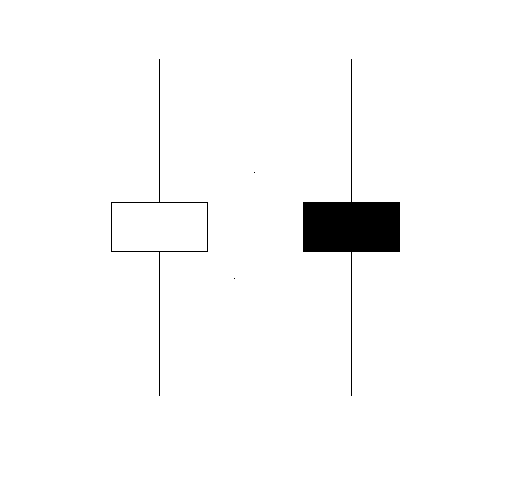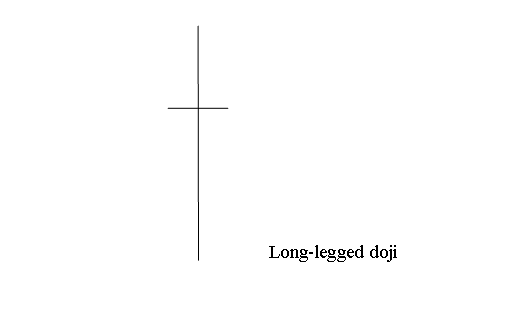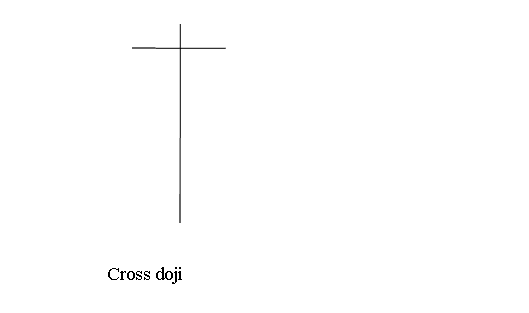Spinning Tops Candles Pattern and Dojis Commodities Candle Patterns
Doji Consolidation Candles Pattern & Doji Continuation Commodities Candle Patterns
Spinning tops candlesticks pattern have a small body with long upper & lower shadows. These spinning top are referred to by this name of spinning top because they are similar to spinning top on a matchstick.
The upper and lower shadows of the spinning tops are longer than the body. The example illustrated and explained below shows the spinning tops pattern. You can look for pattern on your MT4 Commodity Platform charts. The example illustrated & explained below shows a screen-shot to help traders when it comes to learning & understanding these formations.

How to read candle commodity charts - Spinning Tops
Color of the spinning tops candle is not very important, this formation show the indecision between the buyers and sellers in the commodities trading market. When these commodity patterns appear at the top of a commodity trend or at the bottom of the commodity trend it might signify that the commodity trend is coming to an end & it may soon reverse & start going the other direction. However, it is best to wait for confirmation signals that the direction of a commodity trend has reversed before trading the signal from this chart formation.
Candle Reversal Patterns Formations on Trading Charts
At the top of an upwards commodity trend a black/red spinning top shows that a reversal is more likely than when the color of the candle is white/blue.
At the bottom of a Commodity Trading downward commodity trend a white/blue spinning top shows that a reversal is more likely than when the color is black/red.
This reversal commodity signal is confirmed when the next candlestick pattern that forms after the spinning tops closes below the neckline for a downward commodity trend reversal commodity signal confirmation, and closes above the neckline for a reversal commodity signal in a downwards trend.
The neckline is:
- For an Upward Commodities Trend - The open of the previous candle that was drawn just before the spinning top.
- For a Downward Commodities Trend - The open of the previous candle that was drawn just before the spinning top
Below is example of this Japanese charting techniques where this pattern has formed & how to trade it. On the trading chart below when the commodities price moved above the neckline the reversal commodity signal given by the spinning top candlestick was confirmed and this was a good point to exit the short sell commodities trade transaction.

Spinning Top Pattern on a Chart
Color of spinning tops formed is blue therefore meaning that a reversal was more likely as opposed to if the color had been red.
Doji Candles Pattern
This is a pattern with same opening and closing commodities price. There are various types of doji candlestick patterns that form on charts.
following examples explain various patterns of the doji candle:
Long-legged doji candle has long upper and lower shadows with the opening and closing commodities price at the middle. When the Long legged doji appears on a Commodity Trading chart it indicates indecision between commodities traders, the buyer and the sellers.
Below is example screenshot image of the Long Legged

- Doji commodity chart pattern
Cross Doji Commodity Candle
Cross doji has a long lower shadow & a short upper shadow and the open & close of the day is the same.
This commodity pattern pops up at market turning points and warns of a possible commodity trend reversal in the Commodities. Shown Below is as example of this chart formation

- Cross Doji Pattern
Inverted Cross Doji Commodities Candle
Inverted cross doji candlesticks have a long upper shadow & a short lower shadow and the open & close is the same.
This reversal commodity pattern pops up at market turning points and warns of a possible commodity trend reversal in the Commodities. Shown Below is an example

- Inverted Cross doji
Technical Analysis in Commodities Trading - All doji candlesticks pattern show indecision in the commodity market this is because at the top of the buyers were in control, at the bottom the sellers were in control but none of them could gain control & at the close of the commodity market the commodities price closed unchanged at the same commodities price as the opening commodities price. This doji shows that the overall commodities price movement for that day was zero pips or just a minimum range of 1-3 pips. Reading these charts patterns require very small pip movement between the opening commodities price and closing commodities price.
